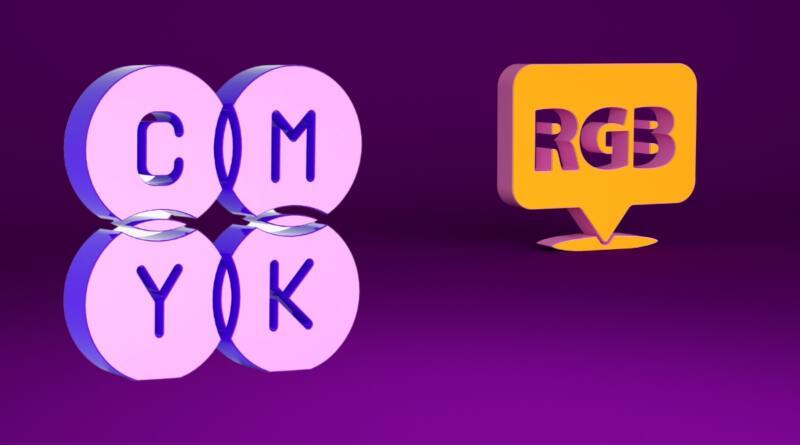Colorful World Of The Print Palette: RGB And CMYK
RGB and CMYK are two different colour models used in various applications. Understanding their differences is crucial for anyone working with digital or print media. RGB, which stands for red, green, and blue, is an additive colour model primarily used for electronic displays such as computer screens and televisions. It combines these three primary colours in different intensities to create a wide range of colours. On the other hand, CMYK, which stands for cyan, magenta, yellow, and key (black), is a subtractive colour model used.
Understanding the distinction between RGB and CMYK colour modes is crucial for artists. The choice between these two modes can significantly impact the final outcome of their artwork. So, what exactly sets them apart, and why does it matter? RGB, which stands for red, green, and blue, is an additive colour model primarily used for digital displays. It combines these three primary colours in varying intensities to create a wide range of hues. Creating artwork for screens, like websites or social media graphics, is a perfect use of this mode. RGB allows for vibrant and luminous colours that can capture the viewer’s attention. On the other hand, CMYK, which stands for cyan, magenta, yellow, and key (black), is a subtractive colour model used for printing purposes. In this mode, colours are created by subtracting light from white paper. CMYK is the preferred choice when preparing artwork for print, such as posters, brochures, or business cards. It ensures accurate colour reproduction on physical media, taking into account Dean Cook’s explanation.
In the world of graphic design, RGB and CMYK stand out as the two most prevalent colour models. RGB represents the trio of red, green, and blue, which are the fundamental hues utilised in digital displays, including computer monitors, TVs, and smartphones. CMYK represents cyan, magenta, yellow, and black, which are the primary colours utilised in the printing process. One notable distinction between RGB and CMYK lies in the method of colour blending.
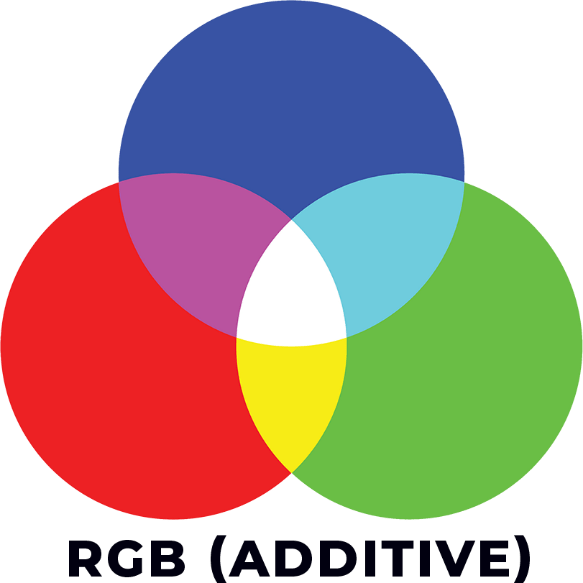
RGB: MIXING LIGHT
In the world of colour, RGB operates on an additive colour model, where colours are formed by the combination of different light sources. When red, green, and blue light are combined, the result is white light. RGB provides a wide range of colours, surpassing other options. The values of each RGB colour range from 0 to 255. Put simply, this results in a staggering 16,777,216 potential colours.
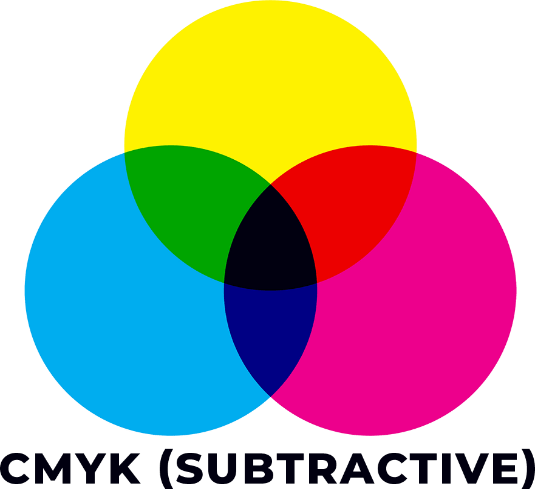
CMYK: MIXING PAINT
The CMYK colour model operates on a subtractive principle, where colours are produced by subtracting light. When cyan, magenta, and yellow paint are combined, the result is black paint. When colours are converted from RGB to CMYK, it is common to observe significant differences due to the smaller colour gamut of CMYK compared to RGB.
Have you ever wondered why the ‘K’ in CMYK is black and not CYMB?
It’s an interesting question that many people have pondered. The reason behind this choice lies in the world of printing and colour reproduction. The ‘K’ actually stands for “key,” which refers to the key plate in traditional printing. This plate is responsible for adding the final details and outlines to an image. By using black ink for this plate, it ensures that the image is crisp and sharp. So, while the inclusion of blacks may seem counterintuitive at first,
Black is commonly known as ‘K’ in the printing industry due to its significance as a key colour in full-colour printing. However, using ‘B’ to represent black can be confusing since it could be mistaken for blue, brown, or beige.
Are your colours acting up?
It is considered good practice in the artwork world to use the colour mode of the output intent. When it comes to producing artwork for both screen and print, one might wonder which method is superior and why.

When it comes to printing artwork, the conversion from RGB to CMYK is an essential step in the process. In the realm of colour conversion, relinquishing control to computer software can have significant implications. Whether it’s exporting PDF files or relying on the printer’s prepress system, the management of colours within your artwork would be completely beyond your reach. Furthermore, it’s important to note that the printer does not perceive colours in the same way as they appear on your screen. When observing the scene, one may notice that the vibrant colours gradually lose their intensity. For instance, oranges may take on a brownish hue, bright greens may darken, or there might be a subtle change in colour, like royal blues appearing slightly more purple. Overall, the outcomes may leave much to be desired.

It is crucial for professionals to avoid relying solely on any pre-press process for blindly converting RGB colours. They meticulously prepare images and artwork to meet the specific requirements of the print output device, ensuring that any potential colour changes are minimised. This level of attention to detail allows them to maintain complete control over the final result.
Each image provided by clients undergoes meticulous colour treatment, profile management, balancing, and enhancement to ensure that the images accurately reflect the intended vision. Most of the work is completed in RGB, then converted to CMYK, and necessary adjustments are made before saving and preparing for placement.
While comparing service providers, it becomes evident that their approaches are different. Instead of simply dragging and dropping unmanaged RGB images, which often leads to poor colour and/or dark and oversaturated images, they prioritise saving time.
What is the preference among designers?
Designers have differing opinions on whether working with RGB or CMYK is better. Those who prefer CMYK often have more experience working with commercial printers and understand the technicalities of colour and how it behaves on different materials. Working with printers has provided professionals with valuable insights that have influenced their preferences for CMYK. Whether they were creating artwork for a screen or print display, they would carefully consider all potential outcomes.
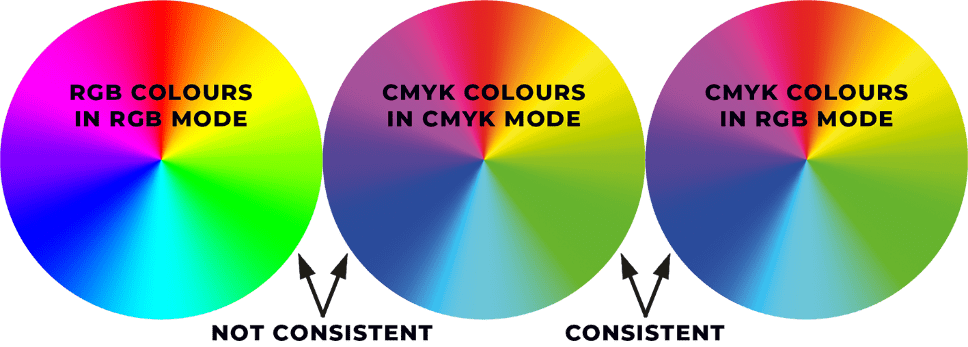
Tips for Ensuring Consistent RGB/CMYK Colour Accuracy
One useful technique for achieving more precise and uniform colour control is to convert RGB images to the CMYK colour gamut, make necessary colour adjustments, and then switch back to RGB mode. With the wider RGB colour gamut, the colours now align with the CMYK gamut, providing a greater sense of assurance that what you see on screen will accurately reflect the printed colour.
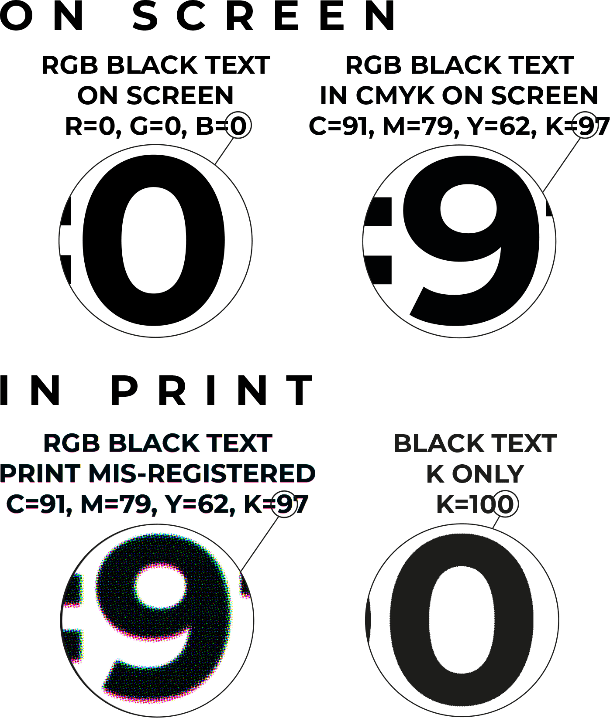
A frequently disregarded issue
In the realm of digital displays, black text appears on screen when all RGB colour values are set to zero, resulting in a complete absence of colour. When converting from RGB to CMYK, an interesting phenomenon occurs. Instead of simply achieving a neutral black, a significant amount of colour is actually added to each channel. This results in a visually striking effect that is quite different from the original RGB representation. In the RGB colour model, black is represented by 0% Red, 0% Blue, and 0% Green. However, in the CMYK colour model, black is typically composed of 91% Cyan, 79% magenta, 62% Yellow, and 97% Black. The issue arises when paragraphs of black copy are paired with these intense colour values.
With the application of colour values to all four C, M, Y, and K channels, the likelihood of blurry fine text increases when the CMYK colours do not align perfectly (ink overlapping). This situation is a common nightmare for printers.
To achieve precise definition with black text, it is necessary to apply the text to the ‘K’ key colour. This requires additional production work to correct or, ideally, work with CMYK from the beginning and keep bodies of text to the black-only ‘K’ channel.
Is CMYK suitable for digital publications?
Indeed, the artwork must be constructed in a way that allows for easy conversion from CMYK to RGB. This ensures better consistency with colour and avoids any technical complications. This feature ensures that all pages are prepared for digital-print or litho-print CMYK processes, allowing for quick and accurate printing of artwork whenever the client requests it. This eliminates the need for additional adjustments or revisions to the assets.
In order to provide a concise response, it is important to note that CMYK encompasses all potential output methods and guarantees the preservation of colour uniformity.

